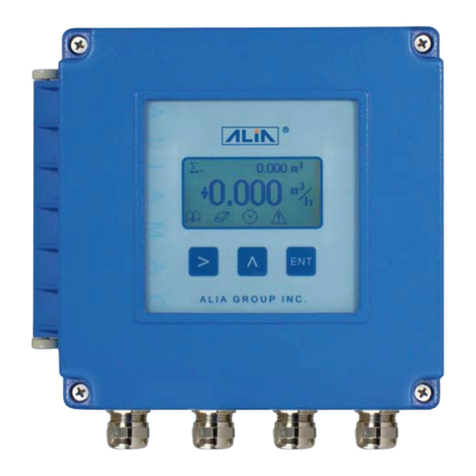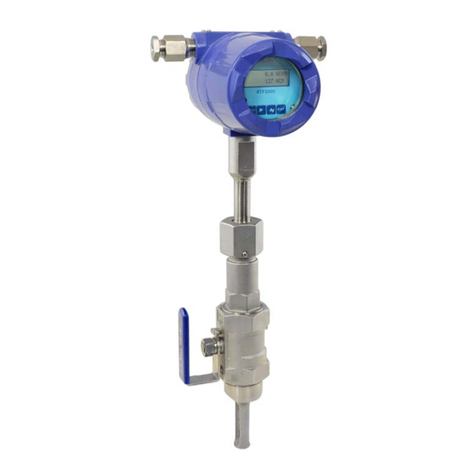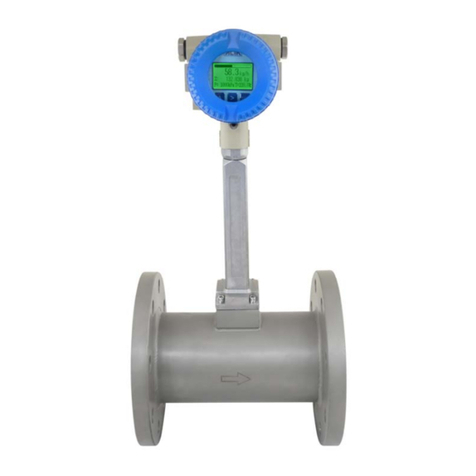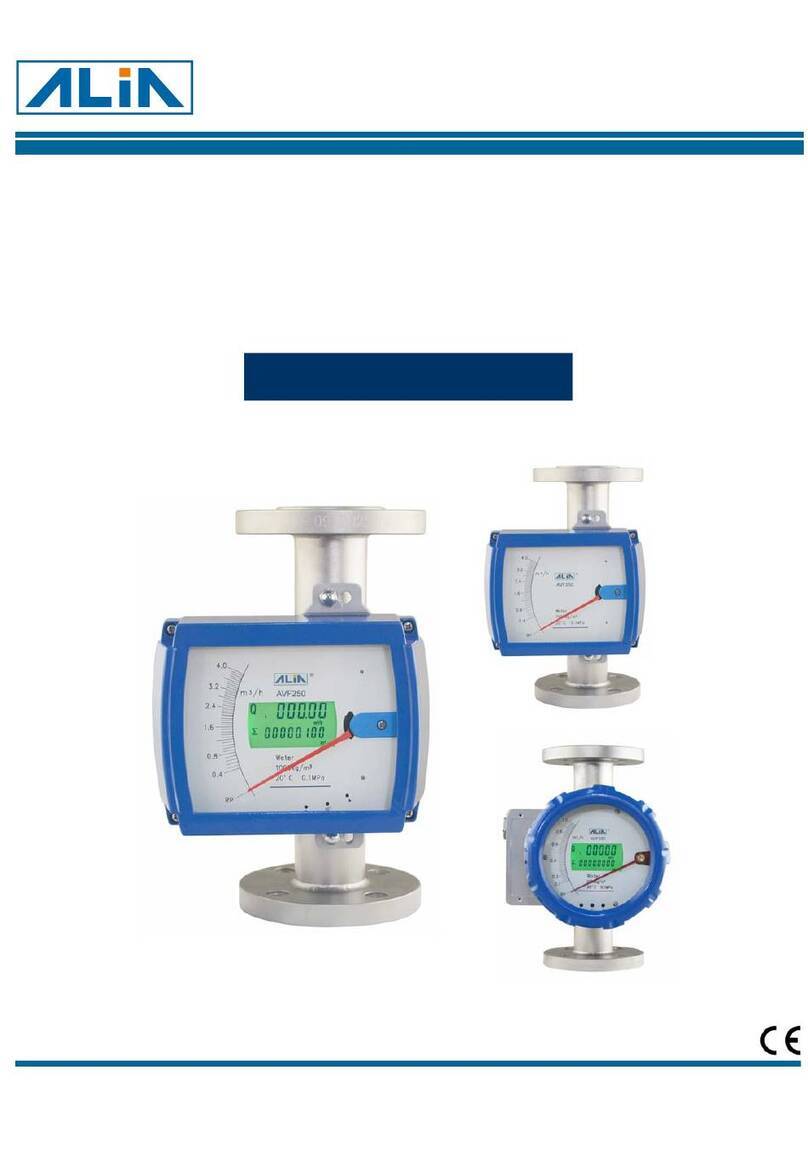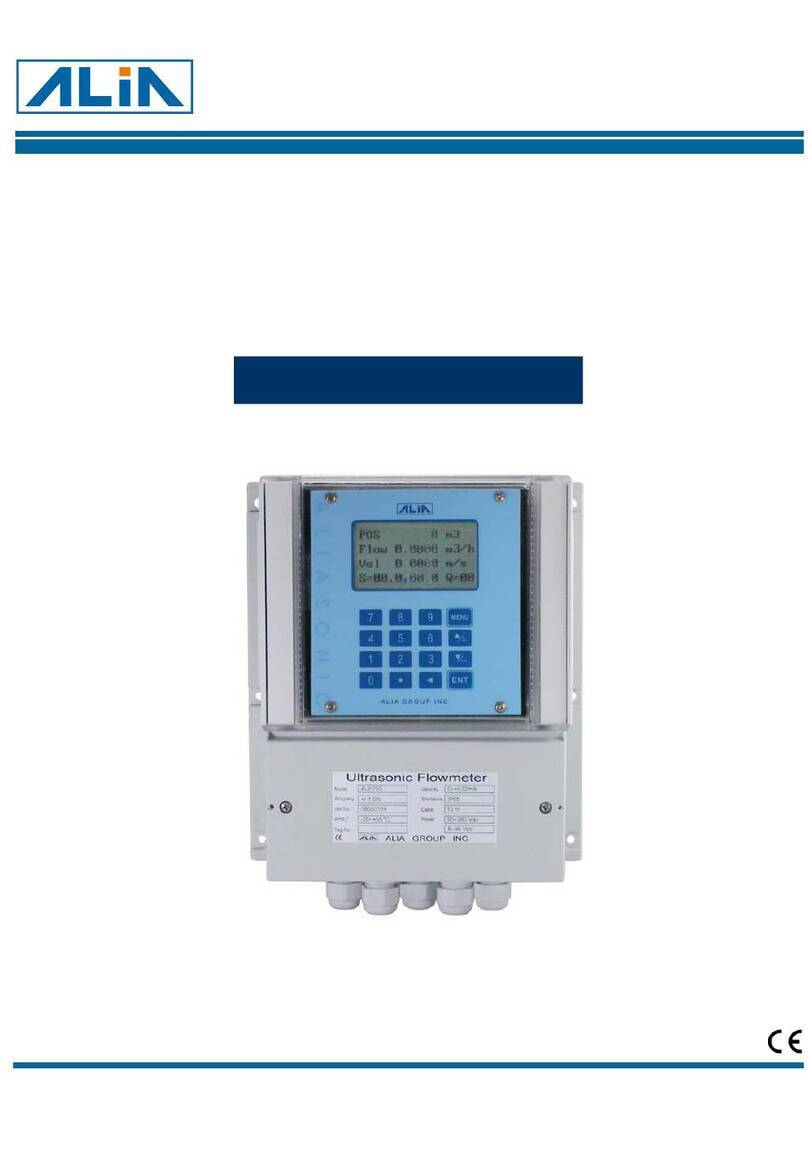AUF610 Series Operation Manual OP610.1.1.5R1ENG
10
1.7 Data Integrity and Built-in Time-Keeper
All user-configured values are retained in non-volatile flash memory that will retain its memory for over 100
years regardless of power status. Password protection is provided to avoid inadvertent configuration
changes or totalizer resets.
A time-keeper is integrated in the flow meter for the indexing of date totalizing. It also works as the time
base for the of flow totalizer. It keeps operating as long as the battery’s terminal voltage is over 1.5V. In
case of total battery failure, the time-keeper will not keep running and it will lose the correct time. The user
must re-enter the proper time in these instances. An improper actual time has no other affect but date
indexing.
1.8 Specifications
Linearity 0.5%
Repeatability 0.2% value of Reading
Accuracy ±1% (R) +/- 2% value of reading ( 0.5 to 30 m/sec)
Response Time 0-999 seconds, user-configurable
Velocity ±32m/s
Pipe Size 15mm-6000mm
Rate Units
Meter, Feet, Cubic Meter, Liter, Cubic Feet, USA Gallon,
Imperial Gallon, Oil Barrel, USA Liquid Barrel, Imperial Liquid
Barrel, Million USA Gallons. User configurable.
Totalizer 7-digit totals for net, positive and negative flow
Liquid Types Clean , homogeneous liquids
Security Setup values Modification Lockout. Access code needs
unlocking
Display 4*8 Chinese characters or 4*16 English letters
Communication
Interface
RS-232C, Baud-rate: from 75 to 57600. Manufacturer’s
protocol Same as FUJI ultrasonic flow meter. Driver data
available on demand, User protocols can be made on
enquiry.
Transducers Model M1 for standard, other 3 models for optional
Transducer Cord
Length
Standard 2*5 meters, optional 2*10 meters
Power Supply
3 AAA Ni-H built-in batteries. When fully recharged it will last
over 10 hours of operation.
100V~240VAC for the charger
Data Logger Built-in data logger can store over 2000 lines of data
Manual Totalizer 7-digit press-key-to-go totalizer for calibration
Housing Material ABS
Case Size 100*66*20MM
Handset Weight 514(1.2 Ibs) with batteries












